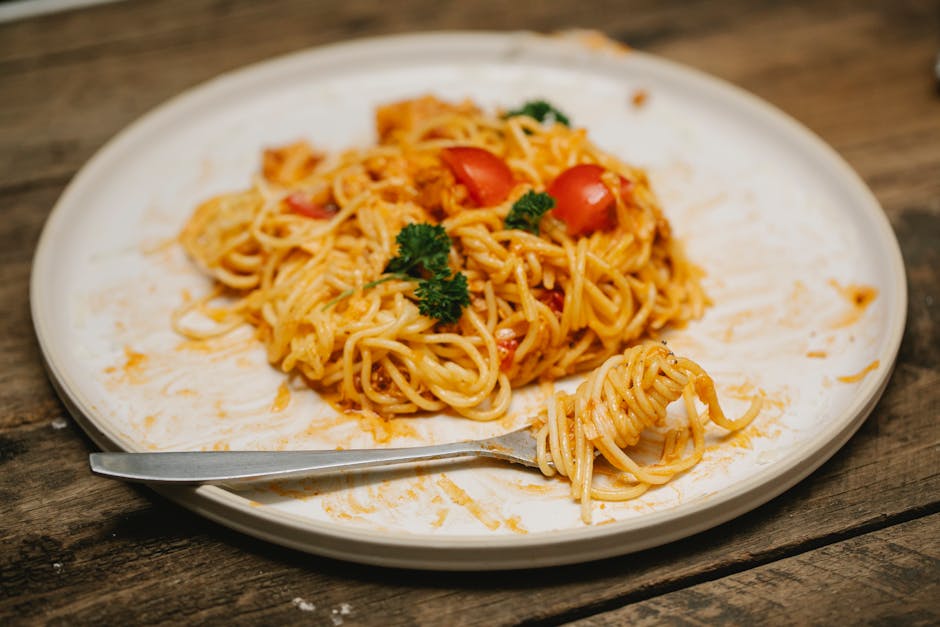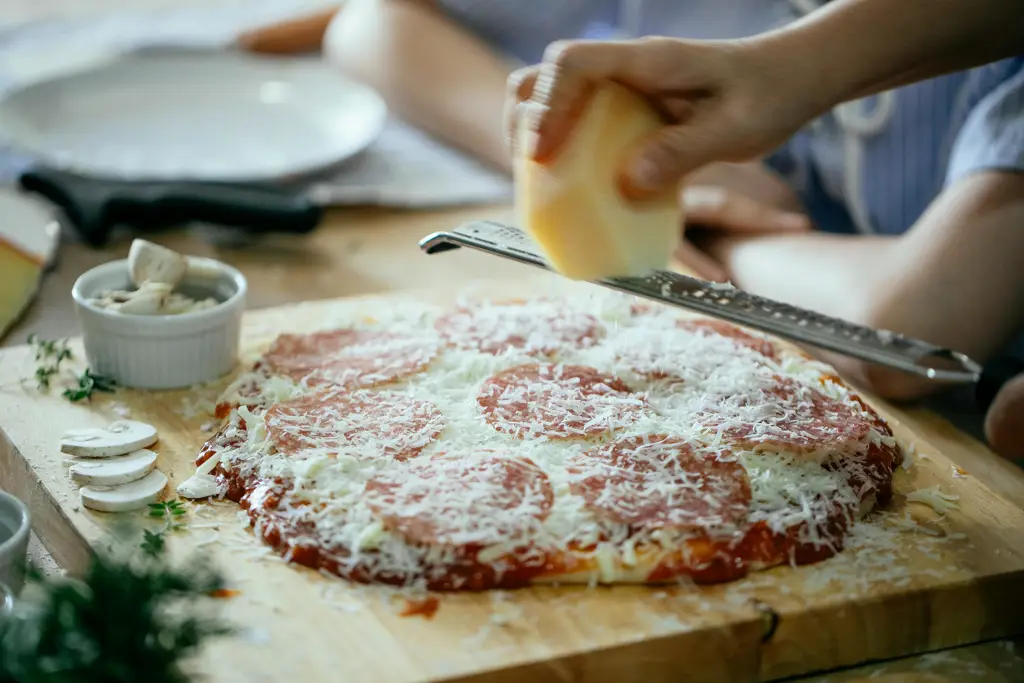Creamy Garlic Parmesan dressing, a staple in countless kitchens across the globe, boasts a history as rich and flavorful as its taste. While pinpointing its exact origin is difficult, its core components—garlic, parmesan cheese, and a creamy base—trace back to ancient culinary traditions. Garlic, revered for its medicinal and culinary properties since antiquity, holds a central place in Mediterranean cuisines, appearing in Roman recipes dating back centuries. Parmesan cheese, a hallmark of Italian gastronomy, similarly boasts a long and storied history, with its production methods refined over millennia. The combination of these two powerful flavors likely emerged organically in various regional Italian kitchens, possibly as a simple sauce for pasta or vegetables, long before standardized recipes existed.
The evolution of creamy garlic parmesan dressing into the ubiquitous condiment we know today is likely a result of the post-World War II culinary boom in the United States. The increased availability of processed ingredients and the growing popularity of convenient meal solutions contributed to the rise of dressings and sauces marketed for ease of use. While precise statistics on its early commercialization are elusive, its widespread adoption is undeniable, reflected in its presence on countless restaurant menus and supermarket shelves. It’s a testament to the dressing’s versatility; it complements salads, pasta dishes, vegetables, and even sandwiches with equal aplomb.
Today, creamy garlic parmesan dressing holds a significant place in modern American and global cuisine. Its appeal transcends geographical boundaries and cultural differences, proving its universal appeal. Although exact figures are difficult to obtain, one can easily infer its high consumption rates based on its presence in countless households and restaurants worldwide. It’s a testament to the power of simple, yet effective flavor combinations. The creamy texture, pungent garlic, and sharp parmesan create a symphony of flavors that satisfy both the palate and the desire for a quick, yet delicious addition to almost any meal. This recipe aims to guide you through crafting a homemade version, allowing you to control the ingredients and enjoy the authentic, rich flavor this dressing offers.
Ingredients and Measurements
Creating a truly exceptional Creamy Garlic Parmesan Dressing hinges on using high-quality ingredients and precise measurements. Don’t be tempted to substitute ingredients willy-nilly; the balance of flavors is delicate and crucial to the final product.
For this recipe, we’ll be using 1 cup (240ml) of mayonnaise as our base. This provides the creamy texture and richness. Ensure you use a good quality mayonnaise; the taste will significantly impact the overall flavor profile of the dressing. Don’t use a low-fat or light mayonnaise, as the reduced fat content will affect the desired creaminess and richness.
Next, we need garlic. We’ll be using 4 large cloves of garlic, minced finely. Fresh garlic is paramount here; pre-minced garlic from a jar simply won’t offer the same vibrant flavor. If you’re short on time, you can use a garlic press, but ensure you mince it as finely as possible to prevent large chunks in your dressing.
For the cheese component, we’ll use 1/2 cup (40g) of freshly grated Parmesan cheese. Pre-grated Parmesan often contains cellulose, which can create a slightly gritty texture. Grating your own cheese ensures a smoother, more flavorful dressing. Use a good quality Parmesan, as this will be one of the dominant flavors.
To add a touch of acidity and brightness, we’ll incorporate 2 tablespoons (30ml) of lemon juice. Freshly squeezed is best, but bottled lemon juice will work in a pinch. Adjust the amount of lemon juice based on your preference; some may prefer a more tangy dressing.
Finally, we’ll use 1 tablespoon (15ml) of extra virgin olive oil to enhance the flavor and add a subtle richness. Use a good quality olive oil; its flavor will be noticeable in the finished dressing. A less flavorful olive oil might be overpowered by the other ingredients.
Salt and freshly ground black pepper should be added to taste. Start with 1/2 teaspoon of salt and 1/4 teaspoon of black pepper, and adjust according to your preference. Taste the dressing as you go and season accordingly. Remember, you can always add more seasoning, but you can’t take it away!
Optional Additions: For an extra kick, consider adding a pinch of red pepper flakes or a teaspoon of Dijon mustard. These additions can significantly enhance the flavor profile, depending on your preferences.
Equipment List
Making a delicious creamy garlic parmesan dressing requires the right tools to ensure smooth, consistent results. This section details the essential equipment, along with recommendations for optimal performance and alternatives where possible.
1. Immersion Blender (or Food Processor): This is arguably the most crucial piece of equipment. An immersion blender, also known as a stick blender, allows for direct blending in the mixing bowl, minimizing cleanup and ensuring a perfectly emulsified dressing. If you don’t own an immersion blender, a food processor works equally well. Simply pulse the ingredients until smooth. Note: For smaller batches, a regular blender can be used, but be cautious not to overfill it.
2. Medium-Sized Mixing Bowl (approx. 2-quart capacity): Choose a bowl that’s large enough to comfortably hold all the ingredients plus provide space for blending. A stainless steel bowl is ideal as it’s durable and easy to clean. Glass bowls also work well.
3. Measuring Cups and Spoons: Accurate measurements are paramount for achieving the desired consistency and flavor. Invest in a set of measuring cups (liquid and dry) and spoons to ensure precise additions of oil, vinegar, and spices. Recommendation: Use a kitchen scale for weighing ingredients, especially parmesan cheese, for even more precise results.
4. Whisk (Optional): While not strictly necessary with an immersion blender or food processor, a whisk can be helpful for initially combining some of the ingredients, such as the garlic and parmesan cheese, before blending. This can help prevent clumping.
5. Small Saucepan (Optional): If you prefer a slightly warmed dressing, a small saucepan can be used to gently heat the oil before adding it to the other ingredients. Caution: Do not overheat the oil, as this can affect the flavor and quality of the dressing.
6. Airtight Container (for Storage): Once your dressing is prepared, store it in an airtight container to maintain its freshness and prevent oxidation. Glass or BPA-free plastic containers are excellent choices. Tip: For longer storage, consider refrigerating the dressing. It will last for approximately 5-7 days.
7. Rubber Spatula (Optional): A rubber spatula can be useful for scraping down the sides of the bowl and ensuring all ingredients are thoroughly incorporated, particularly if using a food processor or a regular blender.
Having these tools on hand will simplify the dressing-making process and help you create a perfectly creamy and flavorful garlic parmesan dressing every time.
Preparation of Ingredients
Before you begin whisking together your creamy garlic parmesan dressing, meticulous preparation of the ingredients is key to achieving a perfectly emulsified and flavorful result. We’ll start with the garlic, the star of this show.
For this recipe, we’ll use 4 large cloves of garlic. You can adjust this based on your preference for garlic intensity, but remember, a little goes a long way. Avoid using pre-minced garlic from a jar, as it often lacks the fresh, vibrant flavor of freshly minced garlic. Instead, peel the garlic cloves and use a microplane grater or a fine-mesh grater to finely grate the garlic. This method produces a smoother texture than mincing, which can lead to chunky bits in your dressing. If you prefer to mince, use a sharp knife and chop as finely as possible.
Next, we’ll tackle the parmesan cheese. 1/2 cup of freshly grated parmesan cheese is needed for this recipe. Using freshly grated parmesan is crucial; pre-grated cheese often contains cellulose which can prevent the dressing from emulsifying properly and can impact the texture and taste negatively. Invest in a good quality grater – a box grater with a fine grating surface works best. Grate the cheese directly into a bowl to avoid unnecessary cleanup.
Now, let’s move on to the other ingredients which, while not requiring as much preparation, still deserve attention. Ensure your 1/4 cup mayonnaise is at room temperature for optimal emulsification. Similarly, bring your 1/4 cup heavy cream to room temperature; this will help create a smoother, creamier texture. Room temperature ingredients blend more easily and create a more homogenous final product.
Finally, measure out your 2 tablespoons of lemon juice and 1 teaspoon of Dijon mustard accurately. These ingredients contribute significantly to the dressing’s flavor profile and balance. Having all your ingredients properly measured and prepared before you start mixing will ensure a smooth and efficient preparation process. Remember to taste and adjust seasonings as needed after combining all ingredients. Enjoy!
Making the Dressing (Whisking, Emulsifying)
Creating a truly creamy garlic parmesan dressing hinges on proper whisking and emulsification. This technique combines oil and vinegar (or other acidic liquid) to create a stable, smooth dressing that won’t separate. We’ll be using a simple, yet effective method to achieve this.
Begin by measuring out your ingredients precisely. For this recipe, we’ll use: 1/2 cup mayonnaise, 1/4 cup grated Parmesan cheese, 2 cloves garlic (minced), 2 tablespoons lemon juice, 1 tablespoon olive oil, 1 teaspoon Dijon mustard, 1/2 teaspoon salt, and 1/4 teaspoon black pepper. Accuracy is key here; too much or too little of any ingredient can impact the final flavor and texture.
In a medium-sized bowl, combine the mayonnaise, Parmesan cheese, minced garlic, lemon juice, and Dijon mustard. Ensure the garlic is finely minced to prevent large chunks in the finished dressing. Using a whisk, vigorously whisk these ingredients together until they are thoroughly combined and smooth. This initial whisking creates the base for your emulsion.
Now, it’s time to incorporate the olive oil. Slowly drizzle the olive oil into the bowl while continuously whisking. This slow addition allows the oil to gradually emulsify with the mayonnaise and other ingredients. If you add the oil too quickly, the dressing may separate. The whisking action creates tiny oil droplets that are suspended within the mayonnaise, preventing separation.
Continue whisking until the dressing is completely smooth and creamy. You should notice a slight thickening as the emulsion forms. A well-emulsified dressing will have a glossy sheen and a consistent texture throughout. If it appears slightly separated, whisk for a few more seconds. If it still separates, you may need to add a tiny bit more mayonnaise or lemon juice to help stabilize it.
Finally, season the dressing to taste with salt and pepper. Taste and adjust seasonings as needed. Some may prefer a stronger garlic flavor, while others might want more lemon juice for acidity. Once you’ve achieved the perfect balance of flavors, your creamy garlic parmesan dressing is ready to be used!
Professional Tip: For an even creamier dressing, use high-quality mayonnaise and freshly grated Parmesan cheese. The quality of your ingredients directly impacts the overall taste and texture of the final product.
Taste and Adjust Seasoning
This crucial step ensures your Creamy Garlic Parmesan Dressing is perfectly balanced and delicious. After combining all the ingredients, take a moment to truly savor the flavors before making any adjustments. Use a clean spoon to take a generous spoonful of the dressing and let it coat your tongue. Pay attention to the individual components; does the garlic come through strongly enough? Is the parmesan cheese assertive enough? Is it salty enough, or does it need a touch more salt?
Start with salt. Salt enhances all the other flavors in the dressing, so it’s often the first thing to adjust. Begin by adding ¼ teaspoon of salt, stir well, and taste again. Continue adding salt in ¼ teaspoon increments until you achieve the desired level of saltiness. Remember that the saltiness will also be affected by the salt content of your parmesan cheese, so adjust according to your preference and the specific cheese you’re using.
Next, assess the garlic. If the garlic flavor is subtle, you can add more. A small clove (about 1/8th of a large clove), minced or finely grated, can make a noticeable difference. Conversely, if the garlic is overpowering, you may need to add a touch more of your other ingredients (like a splash of milk or cream) to balance it out. Don’t be afraid to experiment!
Consider the acidity. A squeeze of lemon juice (start with ½ teaspoon) can brighten the dressing and cut through the richness of the parmesan and cream. If you find the dressing too heavy, a touch of acidity can help lighten it and make it more refreshing. Conversely, if it’s already quite tangy, you may want to omit this step entirely.
Check the consistency. If the dressing is too thick, you can thin it out with a tablespoon or two of milk or cream, or even a little water. Stir thoroughly after each addition to ensure even consistency. If it’s too thin, you can whisk in a teaspoon of grated parmesan cheese or a tiny amount of cornstarch slurry (1 teaspoon cornstarch mixed with 1 teaspoon cold water) to thicken it slightly. Remember to whisk constantly to avoid lumps.
Finally, the overall taste. Does it need anything else? A tiny pinch of black pepper can add a nice depth of flavor. A dash of your favorite herbs (like oregano or basil) can elevate the dressing even further. Trust your palate; the best dressing is the one that tastes best to *you*.
Once you’ve achieved the perfect balance of flavors and consistency, your Creamy Garlic Parmesan Dressing is ready to be enjoyed!
Storage Instructions
Proper storage is crucial for maintaining the freshness and delicious creamy texture of your homemade Garlic Parmesan Dressing. Following these guidelines will ensure you enjoy its vibrant flavor for as long as possible.
Refrigeration is key. Once your dressing is completely cooled, transfer it to an airtight container. A glass jar or a food-safe plastic container with a tight-fitting lid works best. Avoid using metal containers, as they can sometimes react with the ingredients and affect the taste or color of the dressing.
Quantity matters. For optimal freshness, it’s recommended to store the dressing in smaller portions if you don’t plan to use the entire batch immediately. For example, if you made a large batch (e.g., 2 cups), divide it into two 1-cup containers. This helps prevent excess exposure to air, which can lead to oxidation and affect the quality of the dressing.
Storage time: Stored properly in the refrigerator (at a temperature of 40°F or below), your Creamy Garlic Parmesan Dressing should remain fresh and flavorful for approximately 5-7 days. After this period, it’s best to discard any remaining dressing to avoid the risk of spoilage. While it might still appear visually okay, the flavor and texture can degrade over time, and bacterial growth becomes a concern.
Freezing is not recommended. While some dressings can be frozen, this particular recipe, with its creamy emulsion based on oil and cheese, doesn’t freeze well. Freezing can cause separation and a significant change in texture upon thawing, resulting in a less desirable consistency. The creamy texture will likely become grainy and less appealing.
Labeling is important. Before placing your dressing in the refrigerator, label the container clearly with the date it was made. This helps you easily track how long it has been stored and ensures you use it within the recommended timeframe. A simple label with Garlic Parmesan Dressing – Made on [Date] is sufficient.
Proper handling: Always use a clean spoon or utensil when serving the dressing to avoid contaminating the remaining portion. After each use, ensure the container is tightly sealed to prevent air exposure and maintain its freshness.
Signs of spoilage: Before using your stored dressing, visually inspect it. Discard it immediately if you notice any signs of spoilage such as a significant change in color, an off-putting odor, or a slimy or unusual texture. When in doubt, throw it out.
Recommendations
This Creamy Garlic Parmesan Dressing is incredibly versatile and delicious! For the best flavor, we recommend letting the dressing sit for at least 30 minutes after preparation to allow the flavors to meld. This allows the garlic to mellow and the parmesan to fully infuse into the creamy base. For a richer, more intense garlic flavor, use roasted garlic instead of raw garlic.
Serving suggestions are endless! This dressing is fantastic tossed with fresh greens in a salad. Consider adding grilled chicken, shrimp, or steak for a complete meal. It also works wonderfully as a marinade for chicken or fish before grilling or baking. Drizzle it over roasted vegetables like asparagus, broccoli, or Brussels sprouts for an extra layer of flavor. It’s also a delightful addition to pasta dishes, especially those with lighter sauces.
Storage is key to maintaining freshness. Store leftover dressing in an airtight container in the refrigerator for up to 5 days. Ensure the container is properly sealed to prevent absorption of other refrigerator odors. Before serving after refrigeration, give the dressing a good shake or whisk to re-emulsify the ingredients.
Nutritional information (per 2 tablespoons): This is an approximate value and will vary based on specific ingredients used. Calories: Approximately 150-200, Fat: 15-20g, Saturated Fat: 5-8g, Cholesterol: 10-15mg, Sodium: 100-150mg. Please note that these values are estimates and may differ based on the specific ingredients and brands used. For a more precise nutritional analysis, use a nutrition calculator and input your specific ingredients and quantities.
Complementary dishes: This dressing pairs perfectly with dishes featuring lighter flavors. Think Caprese salad, grilled salmon, or even a simple pasta primavera. Avoid using it with dishes that already have strong, overpowering flavors, as it might get lost. Experiment with different herbs and spices to customize the dressing to your liking. A sprinkle of fresh parsley or basil can add a nice touch.





